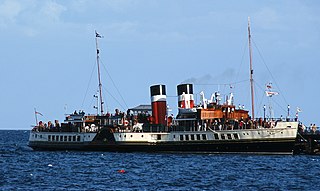
A steamship, often referred to as a steamer, is a type of steam-powered vessel, typically ocean-faring and seaworthy, that is propelled by one or more steam engines that typically move (turn) propellers or paddlewheels. The first steamships came into practical usage during the early 1800s; however, there were exceptions that came before. Steamships usually use the prefix designations of "PS" for paddle steamer or "SS" for screw steamer. As paddle steamers became less common, "SS" is assumed by many to stand for "steamship". Ships powered by internal combustion engines use a prefix such as "MV" for motor vessel, so it is not correct to use "SS" for most modern vessels.

A steamboat is a boat that is propelled primarily by steam power, typically driving propellers or paddlewheels. Steamboats sometimes use the prefix designation SS, S.S. or S/S or PS ; however, these designations are most often used for steamships.

A paddle steamer is a steamship or steamboat powered by a steam engine that drives paddle wheels to propel the craft through the water. In antiquity, paddle wheelers followed the development of poles, oars and sails, where the first uses were wheelers driven by animals or humans.

The Age of Sail is a period that lasted at the latest from the mid-16th to the mid-19th centuries, in which the dominance of sailing ships in global trade and warfare culminated, particularly marked by the introduction of naval artillery, and ultimately reached its highest extent at the advent of the analogue Age of Steam. Enabled by the advances of the related Age of Navigation, it is identified as a distinctive element of the early modern period and the Age of Discovery. Especially in context of the latter, it refers to a more particular Eurocentric Age of Sail, while generally the Age of Sail is the culminating period of a long intercontinental history of sailing.
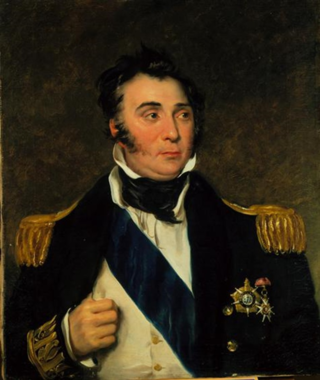
Admiral Sir Charles John Napier was a British naval officer whose sixty years in the Royal Navy included service in the War of 1812, the Napoleonic Wars, Syrian War and the Crimean War, and a period commanding the Portuguese navy in the Liberal Wars. An innovator concerned with the development of iron ships, and an advocate of humane reform in the Royal Navy, he was also active in politics as a Liberal Member of Parliament and was probably the naval officer most widely known to the public in the early Victorian Era.

SS Europa, later SS Liberté, IMO 5607332, was a German ocean liner built for the Norddeutsche Lloyd line (NDL) to work the transatlantic sea route. She and her sister ship, Bremen, were the two most advanced, high-speed steam turbine ocean vessels in their day, with both earning the Blue Riband.

RMS Britannia was an ocean liner of the British and North American Royal Mail Steam Packet Company, later known as Cunard Steamship Company. She was launched on Wednesday 5 February 1840, at the yard of Robert Duncan & Company in Greenock, Scotland. The ship and her sisters, Acadia, Caledonia, and Columbia, were the first ocean liners built by the company.
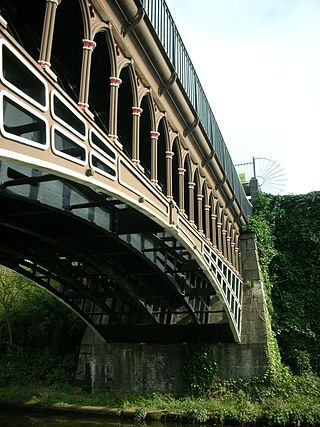
The Horseley Ironworks was a major ironworks in the Tipton area in the county of Staffordshire, now the West Midlands, England.

David Napier was a Scottish marine engineer.
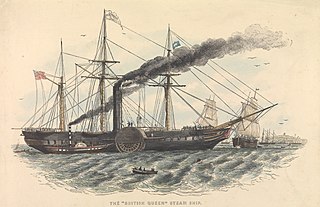
British Queen was a British passenger liner that was the second steamship completed for the transatlantic route when she was commissioned in 1839. She was the largest passenger ship in the world from 1839 to 1840, then being passed by the SS President. She was named in honor of Queen Victoria and owned by the British and American Steam Navigation Company. British Queen would have been the first transatlantic steamship had she not been delayed by 18 months because of the liquidation of the firm originally contracted to build her engine.
The Vulcan, launched in 1819, was the first all iron-hulled vessel (boat) to be built. It was designed as a horse-drawn passenger barge for use on the Scottish canals.

Ville du Havre was a French iron steamship that operated round trips between the northern coast of France and New York City. Launched in November 1865 under her original name of Napoléon III, she was converted from a paddle steamer to single propeller propulsion in 1871 and, in recognition of the recent defeat and removal from power of her imperial namesake, the Emperor Napoleon III, was renamed Ville du Havre. It was named after Le Havre, a major port city in the Normandy region of northern France.
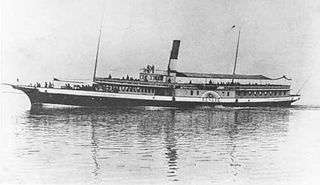
MS Genève is the oldest paddle ship of Lake Geneva. Originally a steamship, she became diesel powered in the 1930s.
Minna was a 1,544 GRT cargo ship that was built in 1922 by Nylands Verksted, Kristiania, Norway for Swedish owners. In 1934, she was sold and renamed Britt. In 1939, she was captured by the Kriegsmarine and sold to German owners in 1940 and was renamed Leba. In 1945, she was seized by the Allies and passed to the Ministry of War Transport(MoWT). She was renamed Empire Conavon and was sold in 1947 to a British company and was renamed Baltkon. She served until 1959 when she was scrapped.

SS (RMS) King Orry (I) No. 21923 - the first vessel in the line's history to be so named - was a wooden paddle-steamer which served with the Isle of Man Steam Packet Company.

Aaron Manby was an English civil engineer and the founder of the Horseley Ironworks, notable for the many fine iron canal bridges that it built. The eponymous Aaron Manby steamboat was the first iron-hulled steamer to go to sea, and it was driven by Manby's patent Oscillating Engine, an effective and durable marine steam engine.

Charles Manby, FRS FRSA was Secretary of the Institution of Civil Engineers from November 1839 to 1856, and engineer of the first iron steamer to cross the English Channel. Fluent in French, he installed gas piping into Paris and advised on the construction of the Suez Canal.

The Compagnie Fraissinet, a Marseilles-based shipping line, played an important role in trade and immigration flows in the Mediterranean, Black Sea, Western Africa and Latin America. The Compagnie Fraissinet added Northern America to its routes after a merger with the Compagnie Française de Navigation à Vapeur Cyprien Fabre & Cie. The Compagnie Fraissinet operated for close to 150 years through two World Wars, several revolutions, and the colonization and decolonization periods. The Fraissinet family started divesting from shipping activities in the 60s to concentrate on aviation and media. Fraissinet lowered its flag in 1968, the tanker Alfred-Fraissinet being the last ship of the company. Fabre kept on operating until 1979.

The Normandie built in 1835, was a French paddle steamer working in conjunction with her sister ship the Seine (1836) on the lower reaches of the Seine. The route she serviced was between Le Havre and Rouen via Honfleur with secondary stops along the way. She gained fame by being a participant in the retour des cendres of Napoleon to France.
Rahmi Kaptan was a ship that was built in 1873 as Honfleur by Aitken & Mansel, Glasgow for the London and South Western Railway. She was sold to Greece in 1911 and renamed Chrysallis then Chrysalis. She was sold to the French Navy in 1917 and served as the patrol vessel Fauvette, later Fauvette I. In 1924, she was sold to Turkey and renamed Ihsanie. She operated for a number of Turkish owners under the names Aidin, Aydin, Cihat, Demirhisar and Rahmi Kaptan, serving until c.2005.

















